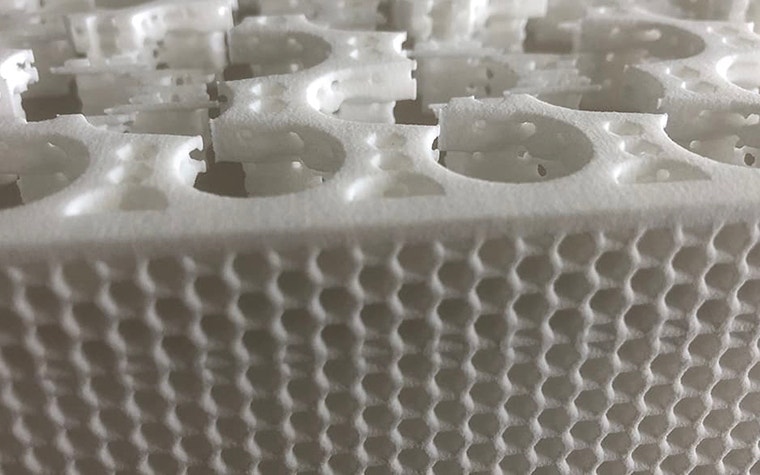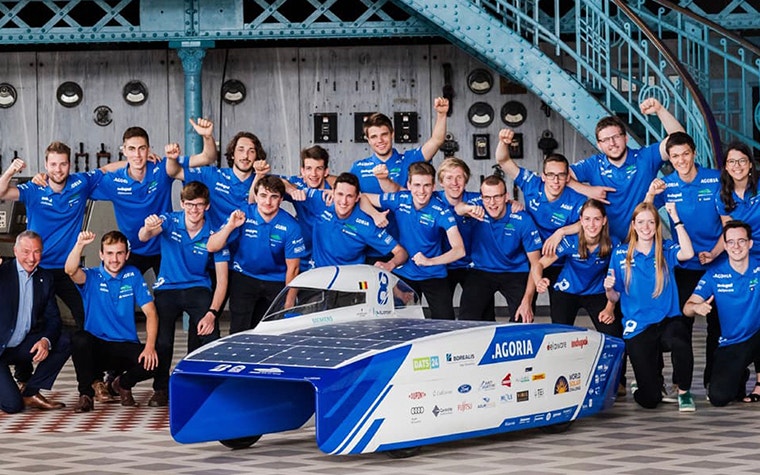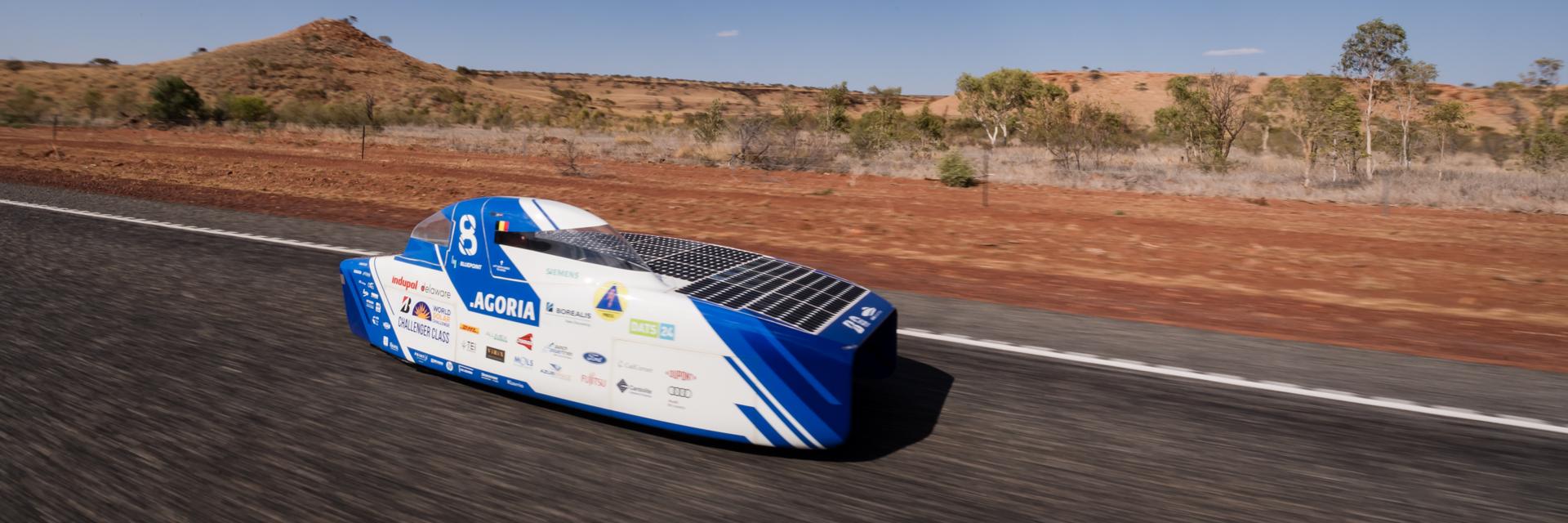CUSTOMER STORY
Materialise Helps Drive Agoria Solar Team Through the Outback

Imagine this: the sunny Australian outback, thousands of kilometers of road ahead of you, and over a year’s worth of your team’s hard work pushing you along toward the finish line. This is exactly what the Agoria Solar Team from a local university, KU Leuven, will experience during the Bridgestone World Solar Challenge. The race takes place October 13-20 starting at the northern tip of Australia in Darwin all the way south to Adelaide. All in a solar-powered car.


This 8-day race is a huge challenge and takes a large team of engineers, support people, partner companies, and more. Materialise has worked with the student group in the past, and this year, Materialise helped out with a battery covering for the vehicle, named BluePoint. The battery is a critical component of the car. It powers BluePoint with the reserved energy that is saved up when there is not enough sunlight and takes in excess energy when the solar panels are in full use. Their finished battery of 5.3 kilowatts provides the car with enough energy to drive an average of 600 kilometers at full charge.
As such an important aspect of the vehicle, the team needed to design and build a battery that not only powered BluePoint but also improved the overall features of the vehicle. Bram Everts, the team member responsible for the design of the battery cover made with Materialise, shared that they “designed this complex part to be as light as possible, but still maintain enough stiffness.” This element had to add enough structure to hold the battery components, allow plenty of airflow for cooling, and remain as light as possible – the maximum weight allowed for the battery is 20kg.
“Thanks to the excellent customer service, we could tackle problems in a very efficient manner and our battery casing was made in no time.”
— Bram Everts, Agoria Solar Team
As 3D-printed products have proven over and over throughout the years, Additive Manufacturing (AM) is the perfect method to create a lightweight material with organic shapes that traditional manufacturing cannot construct. Since the battery requires airflow to stay cool, the covering needed to have a design that struck a balance between having enough structure and providing space for air to get through. AM is the perfect technology to create just that.
The 3D printing method that Agoria Solar Team and Materialise decided would be best for this project is Laser Sintering (SLS). SLS can create thin, complex designs utilizing the material PA12 to keep the battery cells cooled. In between constructions, the team worked with Materialise’s data preparation software, Magics, to adapt and improve the design before continuing with the next build. This gave them the ability to simulate the 3D printing process beforehand so that they could anticipate and automatically correct any errors, saving a significant amount of time and effort.


Building a solar car is no easy feat, of course. The team of 19 engineering students from KU Leuven has been dedicating their efforts since July 2018 to get BluePoint ready for this race. After undergoing an extensive interview process to join Agoria Solar Team, each member of the group can spend up to 80 or 90 hours each week on this incredible project alongside their studies. Although it’s hard work, the project is a fantastic adventure for the students. “I think the Solar Team is an invaluable experience,” says team member Cédric Robert. “It provides me with way more knowledge than simply studying.”
Designing, collaborating, building, and testing BluePoint continues all the way up to race day. Along with innovation amongst the team, collaboration with their partners is also crucial in order to improve the car as much as possible from year to year. Agoria Solar Team needed partners, such as Materialise, that would work closely with them to fine-tune each and every detail so that they can achieve their goal of making the car at least 10% more efficient than the previous one.


Creation of the battery covering was very much a collaborative effort. It required two or three weeks of effective communication and brainstorming between Agoria and the Materialise team to continuously improve the design until the result was exactly what they needed. Bram says of working with Materialise, “Thanks to the excellent customer service, we could tackle problems in a very efficient manner and our battery casing was made in no time.”
As if building a car that runs on solar energy isn’t difficult as it is, it was also essential for the team to adhere to race guidelines on qualified drivers, racing hours, battery weight, and more. These rules made it necessary for the team to build a specific plan to get the absolute most out of what they are allowed. From race simulation tests to testing the density of the air, this team has been working tirelessly to solve any issue that arises and succeed in their race through the outback.
The race starts soon, and you can stay updated on progress via the Solar Team’s social media and live show. Tune in to the team’s Facebook page each day of the race at 8 pm, Belgian time, to find out their progress, achievements, and more updates. Keep in mind that the shows are in Dutch and will not be subtitled. Best of luck, Agoria Solar Team!
Partageons :
Vous aimerez peut-être aussi
Ne ratez jamais une histoire comme celle-ci. Recevez-les dans votre boîte de réception une fois par mois.
